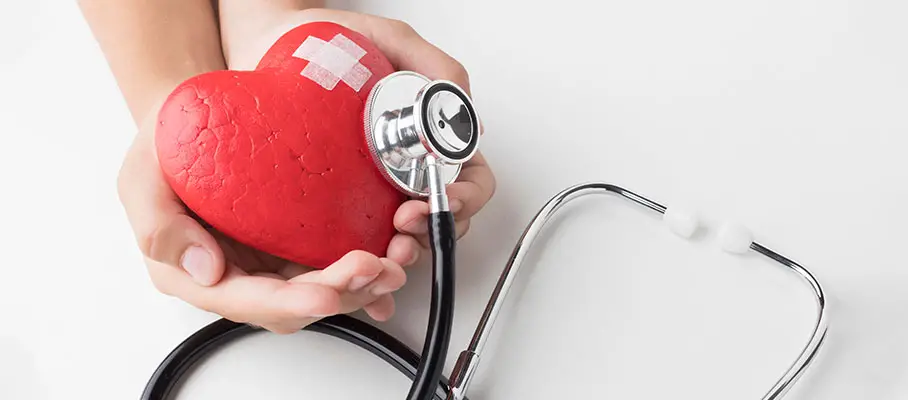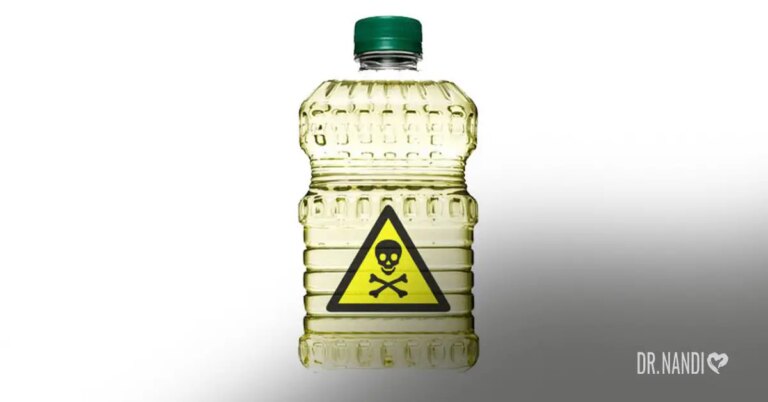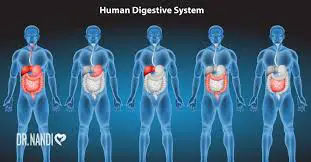Is your heart silently whispering a dangerous secret? Learn how to listen and identify heart attack warning signs you might be missing and unlock the key to safeguarding your health. By familiarizing yourself with the symptoms and implementing preventive measures, you can take proactive steps toward safeguarding your heart health.
Heart Attack by the Numbers: Statistics
Heart disease remains a grave concern in the modern world, with devastating consequences for individuals and their families. In the United States alone, heart disease is the leading cause of death, claiming the lives of almost 700,000 people in 2021. [1]
Alarmingly, 805,000 people experience a heart attack in the US every year, and one in every five attacks is silent — meaning those who experienced it didn’t know it happened. [1]
Additionally, latest statistics from the World Health Organization, approximately 17.9 million individuals succumbed to cardiovascular diseases in 2019, accounting for 32% of total global fatalities. Among these deaths, 85% were attributed to heart attacks and strokes. [2]
These statistics underscore the urgent need for increased awareness and education regarding heart attack warning signs and preventive measures, including the importance of maintaining healthy blood pressure levels.
However, there is hope. Research has shown that our bodies often provide warning signals before a heart attack occurs, offering an opportunity to seek timely medical intervention and potentially save lives.
Cardiac Arrest vs. Heart Attack
Before delving into the warning signs of a heart attack, it is crucial to differentiate between a heart attack and cardiac arrest. While these terms are often used interchangeably, they describe distinct medical events.
Cardiac arrest refers to a sudden and dramatic electrical malfunction of the heart, occurring without warning and potentially leading to immediate death. On the other hand, a heart attack develops gradually, usually due to a blocked artery preventing oxygen-rich blood from reaching a section of the heart.
Unlike cardiac arrest, heart attack symptoms can manifest over days or weeks before the actual event, providing a window for early detection and intervention. [3]
Warning Signs of a Heart Attack
Recognizing the warning signs of a heart attack is of paramount importance for early intervention. While symptoms may vary among individuals, the following indicators should never be ignored:
1. Cold Sweats and Dizziness: Impaired blood circulation hampers the brain’s access to adequate blood flow, resulting in cold sweats and dizziness. These symptoms may indicate an imminent heart attack or other serious health conditions.
2. Chest Pressure: Chest pressure, also known as angina, is one of the most well-known and noticeable signs of a heart attack. It is essential to distinguish this sensation from indigestion. When the pressure becomes constant, it may indicate inadequate oxygen-rich blood supply to the heart.
3. Feeling Weak: Sensations of weakness, accompanied by nausea and jaw pain, can be indicative of diminished blood flow throughout the body, which may precede a heart attack.
4. Flu-Like Symptoms: It may come as a surprise, but experiencing flu-like symptoms such as fever, fatigue, and chest pain lasting for 2 to 10 days can potentially signify an impending heart attack. Consulting a healthcare professional can help differentiate between flu-related symptoms and those associated with the heart.
5. Chronic Fatigue: Constant tiredness and sluggishness can result from insufficient blood flow due to plaque build-up in the arteries, increasing the risk of a heart attack.

6. Shortness of Breath: Adequate blood supply to the lungs is essential for proper breathing. Insufficient blood flow can lead to shortness of breath, potentially signaling an elevated risk of a heart attack.
7. Insomnia: Prolonged periods of insomnia can lead to elevated blood pressure. If left unmanaged, it can eventually result in a heart attack.
8. Stomach Pain: Abdominal pain, nausea, and bloating can serve as early indicators of an impending heart attack. In some cases, individuals may experience recurring stomach pains shortly before the actual event occurs.
Heart Attacks in Women
It is crucial to note that heart attack symptoms in women can differ from those experienced by men. Women often exhibit less pronounced classic angina symptoms and may instead experience a burning sensation, pain in their arms, neck, jaw, back, and throat, light-headedness, fatigue, and nausea. [4]
Risk Factors for Heart Diseases
To effectively address heart disease and mitigate the risk of heart attacks, it is essential to identify and manage the following risk factors:
- High blood pressure
- Poor diet and high sodium consumption
- Eating disorders
- High cholesterol
- Being overweight and/or obese
- Physical inactivity
- Excessive alcohol intake
- Smoking
- Diabetes
- Autoimmune diseases
- Family history of heart disease
- Age [5,6,7]
Taking proactive measures to address these risk factors is crucial for safeguarding heart health and preventing heart attacks.

Preventive Measures: My Personal RX
While being aware of warning signs and risk factors is important, taking proactive steps to prevent heart attacks is equally vital. Consider the following strategies as part of my personal prescription for your heart health:
- Choose a nutritious diet of whole foods rich in fiber, vitamins, minerals, and antioxidants. Incorporate leafy greens, organic vegetables, fruits, nuts, seeds, legumes, and beans into your meals.
- Quit smoking or avoid tobacco use altogether. Smoking poses significant risks to heart health and increases the likelihood of a heart attack.
- Moderate or eliminate excessive alcohol consumption. Excessive drinking can lead to detrimental effects on heart health, making moderation or abstinence advisable.
- Stay physically active by engaging in regular exercise for at least 20 to 30 minutes, five days a week. Aim for a combination of cardiovascular exercise and strength training to promote heart health.
- Maintain a healthy weight by adopting a well-balanced diet and engaging in regular physical activity. A healthy weight and optimal muscle-to-fat ratio reduce the risk of heart disease and heart attacks.
- Manage stress and anxiety through techniques such as meditation, relaxation exercises, yoga, or journaling.
- Effectively manage diabetes or pre-diabetes through proper medical guidance and lifestyle adjustments. Controlling blood sugar levels is essential for reducing the risk of heart disease.
- I recommend my specially formulated Pure N-Acetyl Cysteine, a potent antioxidant supplement that can aid in managing high blood pressure. By raising glutathione levels, one of the body’s most essential antioxidants, it contributes to various metabolic processes and supports the health of critical body systems, including respiratory, hepatic, and immune.
- Taking care of your body doesn’t stop at your heart health. Download my free step-by-step protocol for a guided journey toward a more holistic health transformation.
- Identify and Eliminate Harmful Substances: As part of a comprehensive approach to heart health, it’s crucial to be mindful of toxic ingredients in your everyday life. I recommend downloading my free toxic ingredient guide that will help you identify and eliminate harmful substances found in common household products, food additives, and personal care items that could potentially impact your heart health negatively.
- Boost Heart Health with my Detox Bundle: carefully curated detox bundle is designed to support your heart health journey by aiding the body’s natural detoxification process. Packed with heart-loving nutrients and antioxidant-rich supplements, this bundle works synergistically to reduce oxidative stress, promote better circulation, and improve overall heart function, reducing the risk of heart attacks and other cardiovascular issues.
Remember, incorporating necessary lifestyle changes can significantly lower your risk of heart disease and heart attacks. Being knowledgeable about the warning signs and risk factors empowers you to protect your life and the lives of your loved ones.
If you suspect a heart attack, do not hesitate to call 911. Prompt action can save lives.

References:
- Heart Disease Facts | cdc.gov. (2023, May 15). Centers for Disease Control and Prevention. https://www.cdc.gov/heartdisease/facts.htm
- World Health Organization: WHO. (2021). Cardiovascular diseases (CVDs). www.who.int. https://www.who.int/news-room/fact-sheets/detail/cardiovascular-diseases-(cvds)
- Heart Attack and Sudden Cardiac Arrest Differences. (2023, May 16). www.heart.org. https://www.heart.org/en/health-topics/heart-attack/about-heart-attacks/heart-attack-or-sudden-cardiac-arrest-how-are-they-different
- Heart Attack Symptoms in Women. (2023, May 16). www.heart.org. https://www.heart.org/en/health-topics/heart-attack/warning-signs-of-a-heart-attack/heart-attack-symptoms-in-women
- Heart Disease and Stroke | CDC. (n.d.). https://www.cdc.gov/chronicdisease/resources/publications/factsheets/heart-disease-stroke.htm
- Understand Your Risks to Prevent a Heart Attack. (2023, June 6). www.heart.org. https://www.heart.org/en/health-topics/heart-attack/understand-your-risks-to-prevent-a-heart-attack
- Understand Your Risk for Heart Disease. (2022). National Heart, Lung, and Blood Institute. https://www.nhlbi.nih.gov/health/heart-healthy-living/risks




















